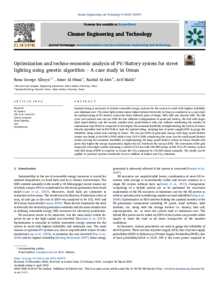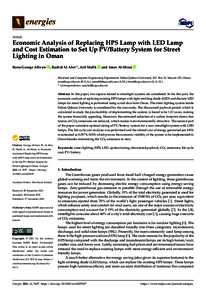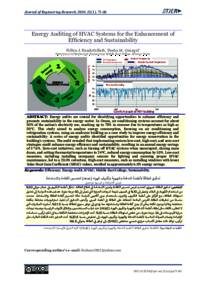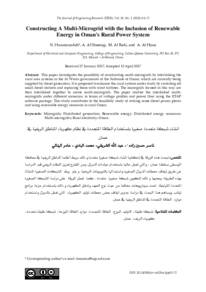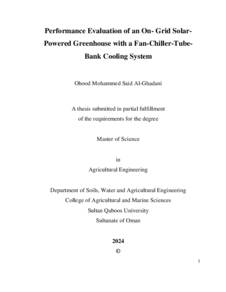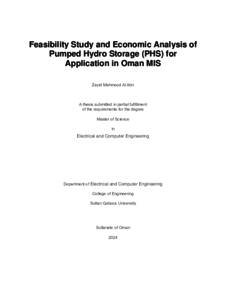Document
Optimization and techno-economic analysis of PV/battery system for street lighting using genetic algorithm – a case study in Oman.
Identifier
DOI: 10.1016/j.clet.2022.100475
Source
Cleaner Engineering and Technology. v. 8, 100475
Contributors
Country
Netherlands.
City
Amsterdam
Publisher
Elsevier Ltd.
Gregorian
2022-06-01
Language
English
Subject
English abstract
Optimal sizing is necessary in hybrid renewable energy systems for the system to work with highest reliability and minimum cost. The street light system inside Sultan Qaboos University in Oman is considered as a case study for optimal sizing of PV/battery system for three different types of lamps, HPS, LED and discrete LED. The life cycle cost analysis and cost per kWh for two different configurations of panel and battery, the first with larger sized panel/battery and the second, smaller sized panel/battery with and without considering the number of autonomous days(NAD) is compared to investigate the economic feasibility of implementing the system in Oman. Genetic algorithm tool in MATLAB is used for optimal sizing, adopting loss of power supply(LPS) to gauge the reliability using actual data existing in Oman. The cost per kWh of generated energy with large panel/battery system was found to be 0.08 $/kWh while it was 19.9 $/kWh considering the same case for small panel/battery system proving the economic feasibility of implementing the large panel/battery system in Oman. Results also prove that higher the energy requirement, higher the LCC but lesser the cost per kWh. The conversion of the grid connected street light system extending a stretch of 8.6 km with 285 HPS lamps of 400 W to PV/battery system with LED lamp of 80W is expected to reduce the CO2 emissions by 133.595 tonnes annually. The results can be applied to practical systems worldwide to save millions of dollars and CO2 emissions.
ISSN
2666-7908
Category
Journal articles

